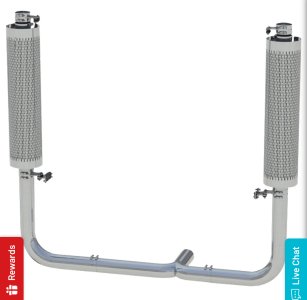-
Scam Alert. Members are reminded to NOT send money to buy anything. Don't buy things remote and have it shipped - go get it yourself, pay in person, and take your equipment with you. Scammers have burned people on this forum. Urgency, secrecy, excuses, selling for friend, newish members, FUD, are RED FLAGS. A video conference call is not adequate assurance. Face to face interactions are required. Please report suspicions to the forum admins. Stay Safe - anyone can get scammed.
You are using an out of date browser. It may not display this or other websites correctly.
You should upgrade or use an alternative browser.
You should upgrade or use an alternative browser.
Machine Air compressor muffler
- Thread starter DavidR8
- Start date
Machine
At one shop i worked at, they had a compressor with a regular car muffler on the intake, with the intake piped through the wall. It was very quiet.
I actually aquired that compressor, but later sold it. I fired it up at home without the muffler, and it was a lot louder.
I will be doing the same to mine soon too.
I actually aquired that compressor, but later sold it. I fired it up at home without the muffler, and it was a lot louder.
I will be doing the same to mine soon too.
Hmmm I wonder if a small engine muffler would work?At one shop i worked at, they had a compressor with a regular car muffler on the intake, with the intake piped through the wall. It was very quiet.
I actually aquired that compressor, but later sold it. I fired it up at home without the muffler, and it was a lot louder.
I will be doing the same to mine soon too.
“In this corner I have my compressor”This one was a full sized car muffler. I'm not sure a smaller one would help much
“Is that a Flowmaster muffler?!”
“Sure is, I wanted maximum airflow”
KeeponDragon
no problems... just challenges
found a few videos on youtube of some noise suppression solutions...not a car muffler though...
makes sense the baffles would act against the air flow pulses
makes sense the baffles would act against the air flow pulses
Former Member
Guest
One thing that greatly reduces noise is sound isolator pads under the compressor and bolting it down. Basically this damps any vibration running through the machine being amplified through the tank (think nice big bass speaker).
KeeponDragon
no problems... just challenges
I think the muffler idea would need something that is internally baffled...
Without some reflective surface, the pulses wouldn't interact with each other
Looking at (not actually watching) the thumbnail David posted, that big stainless can is offset an inlet/outlet design. Which is why it would work.

Without some reflective surface, the pulses wouldn't interact with each other
Looking at (not actually watching) the thumbnail David posted, that big stainless can is offset an inlet/outlet design. Which is why it would work.

He does comment that it's a straight through design so likely would be quieter with something that had more baffles.I think the muffler idea would need something that is internally baffled...
Without some reflective surface, the pulses wouldn't interact with each other
Looking at (not actually watching) the thumbnail David posted, that big stainless can is offset an inlet/outlet design. Which is why it would work.

I worked in many areas of vehicle R&D but never in the Muffler and catalyst group. However, I did work in engine design which included intake and exhaust manifolds.
About all I can add is that flow restrictions are important. The general idea is to limit air column pulsing at the frequency of engine (compressor) operation but not restrict the overall air flow rate. Small orifices, small tubes, lots of bends, and direction changes all restrict air flow. Because the frequency is sensitive to the length of the tubes, they used to sell variable frequency mufflers. Perhaps something like that could be used to dampen the noise without affecting performance?
Whatever you end up doing, I think it would be interesting to measure the time it takes to reach a given pressure differential with and without the muffler. The more noise suppression you can get without affecting the time, the better.
About all I can add is that flow restrictions are important. The general idea is to limit air column pulsing at the frequency of engine (compressor) operation but not restrict the overall air flow rate. Small orifices, small tubes, lots of bends, and direction changes all restrict air flow. Because the frequency is sensitive to the length of the tubes, they used to sell variable frequency mufflers. Perhaps something like that could be used to dampen the noise without affecting performance?
Whatever you end up doing, I think it would be interesting to measure the time it takes to reach a given pressure differential with and without the muffler. The more noise suppression you can get without affecting the time, the better.
I’m thinking something along these lines.
Why two?
I’m kidding! Those are duals for a semi truckWhy two?
I’m kidding! Those are duals for a semi truckWhy two?
I’m kidding! Those are duals for a semi truck
You got me!

